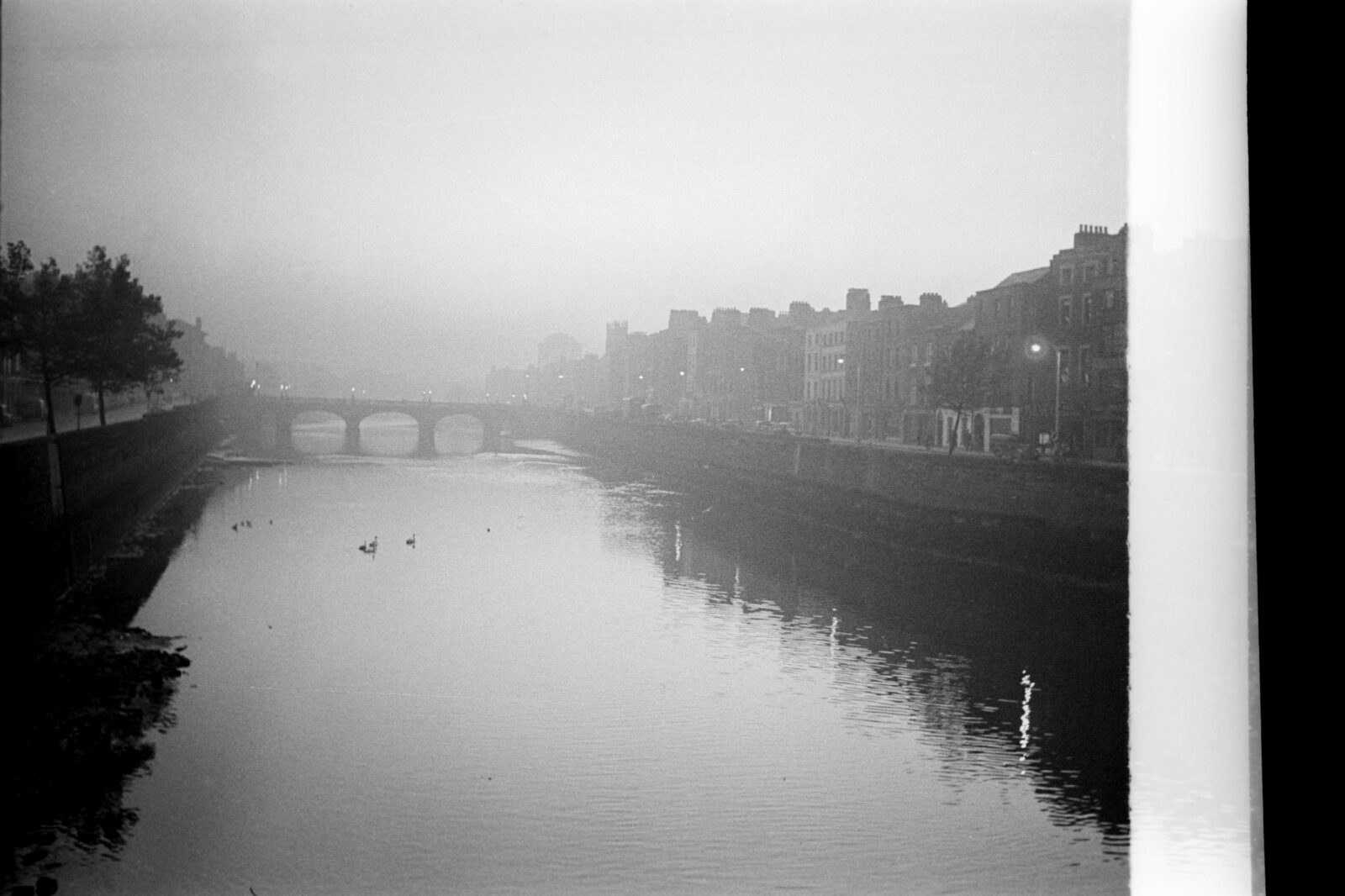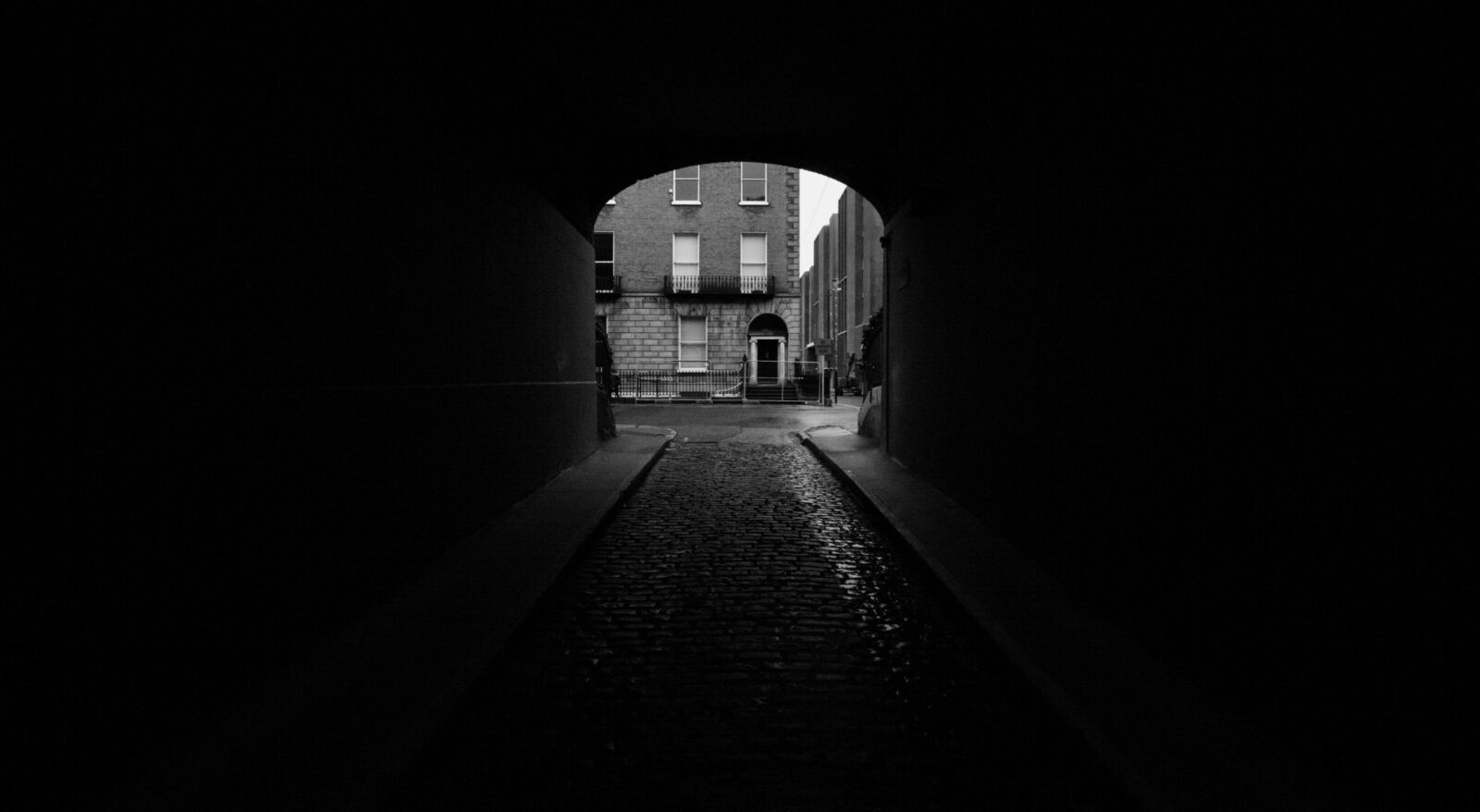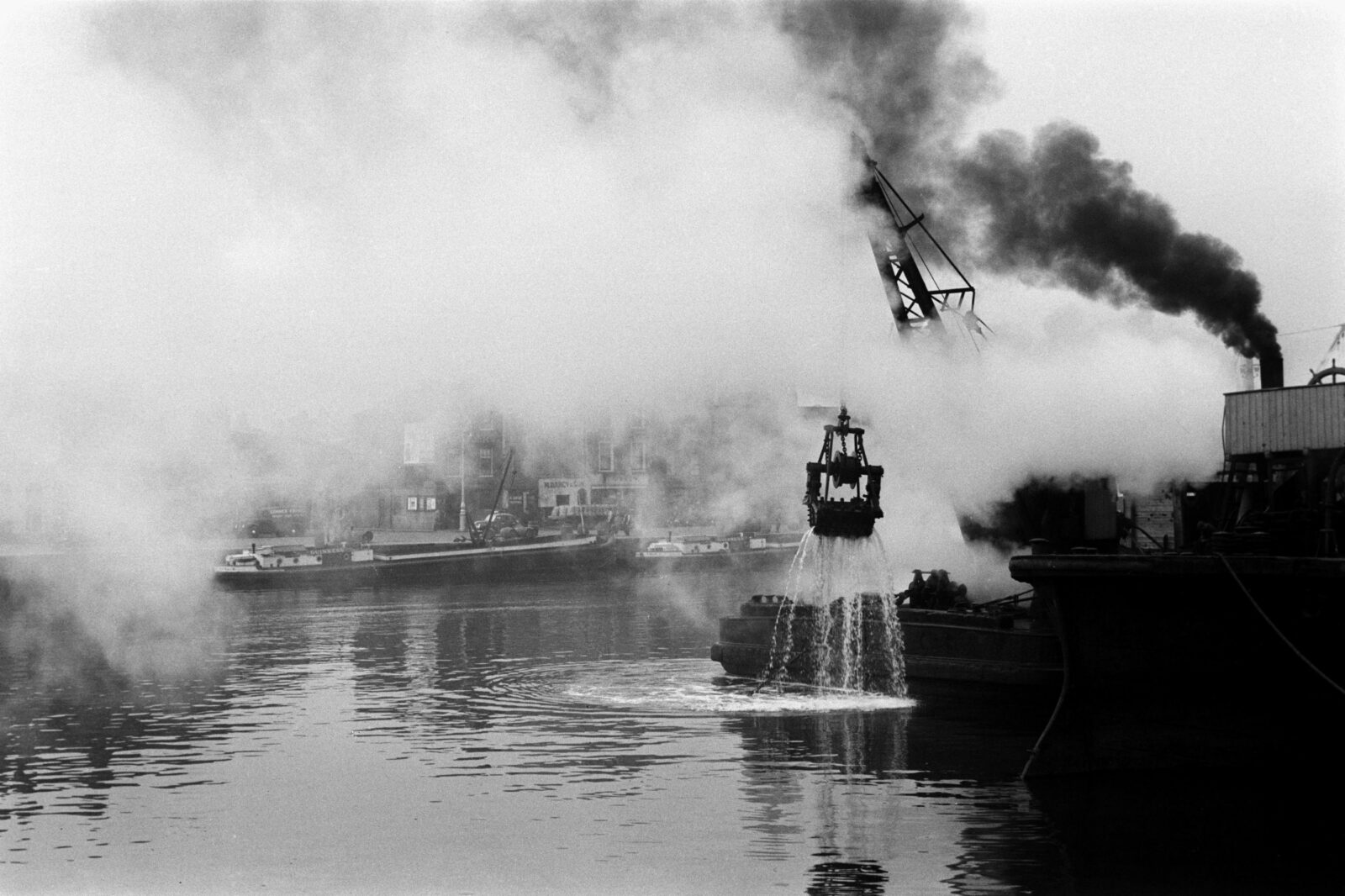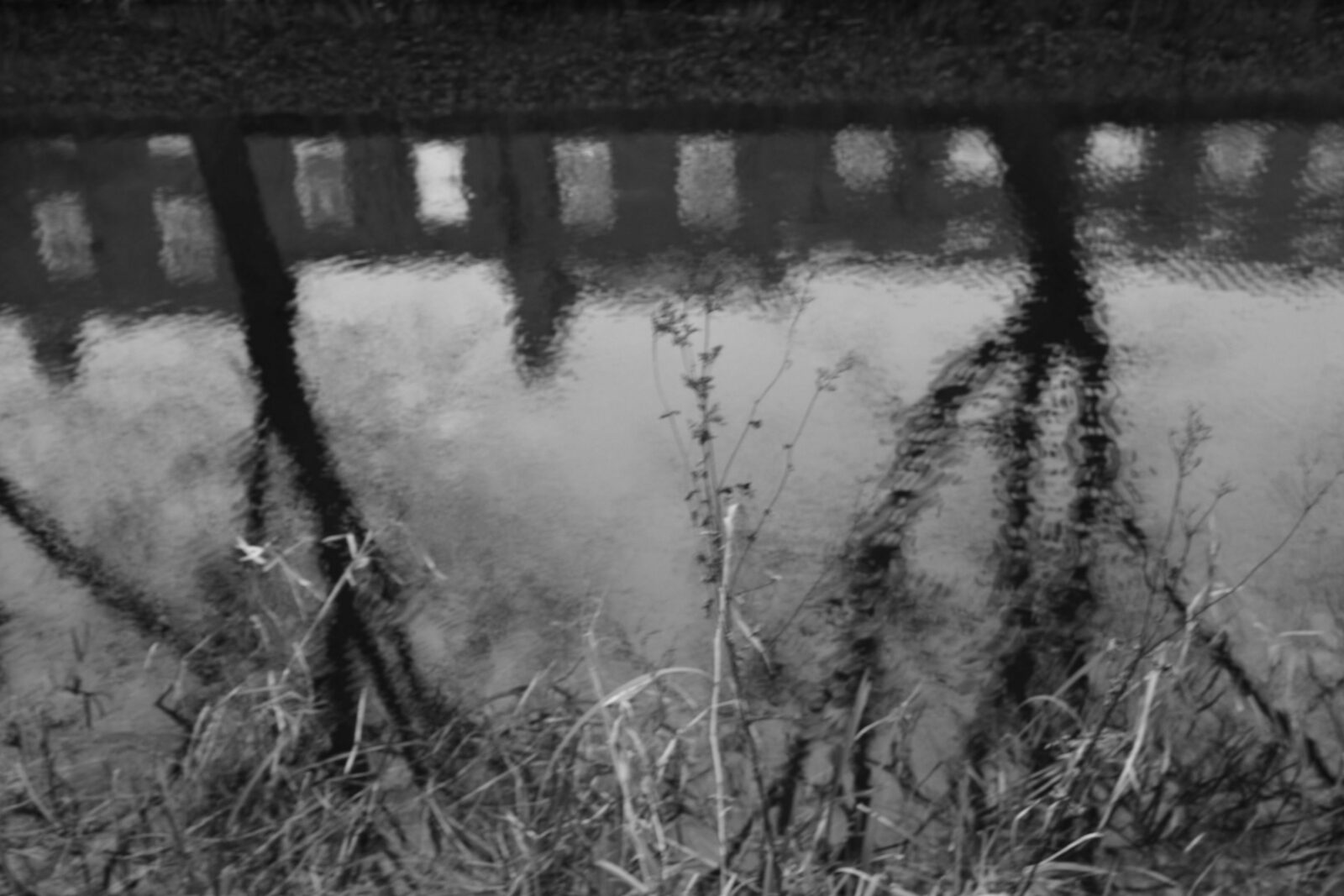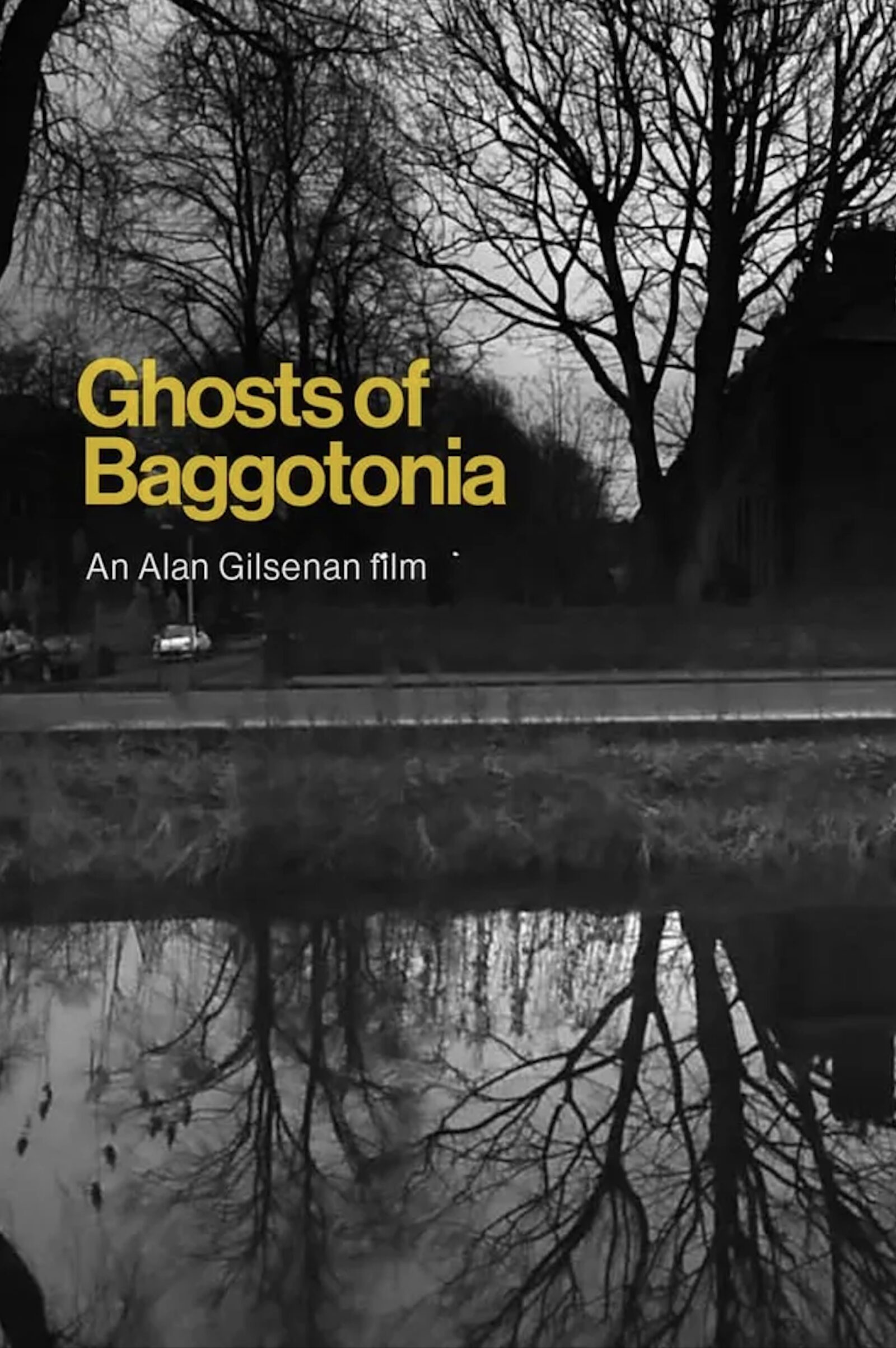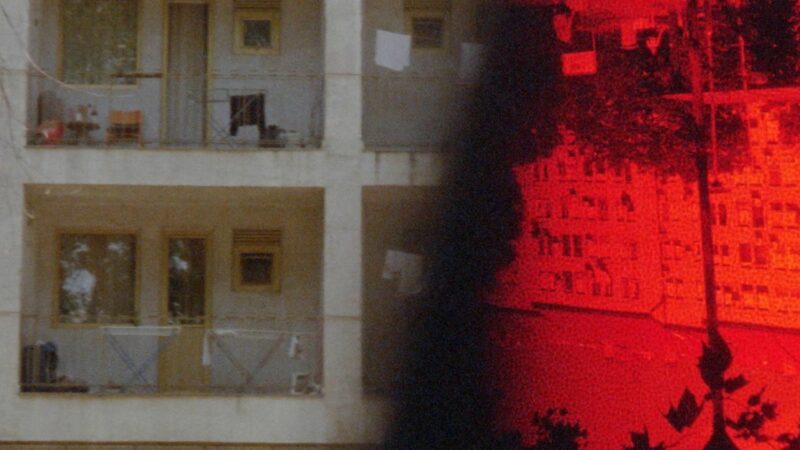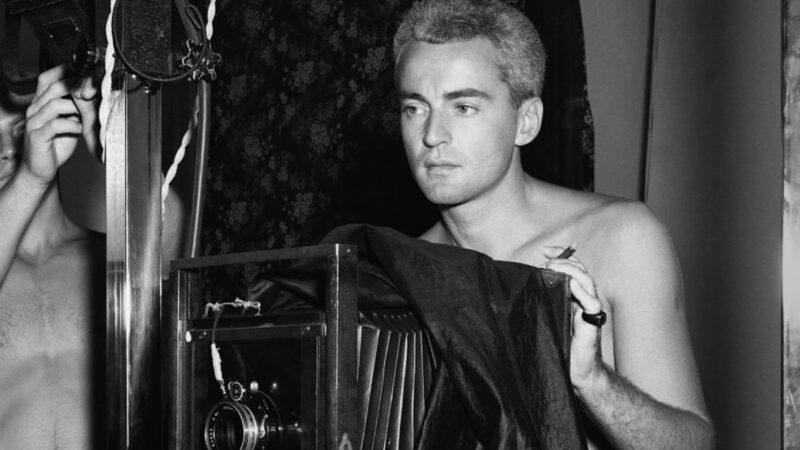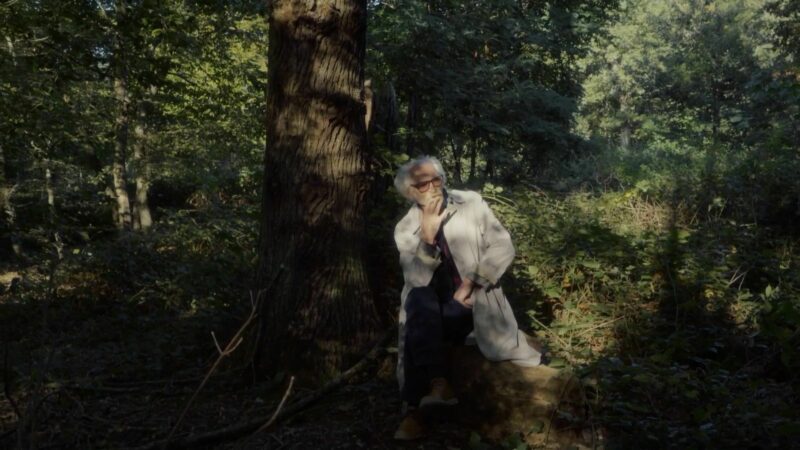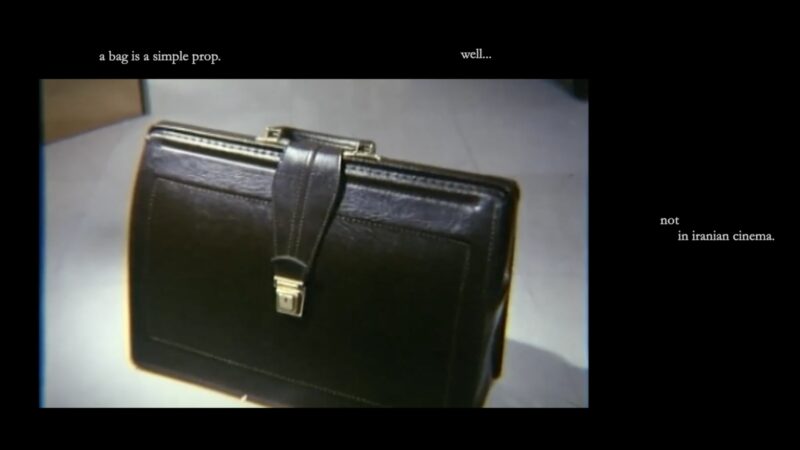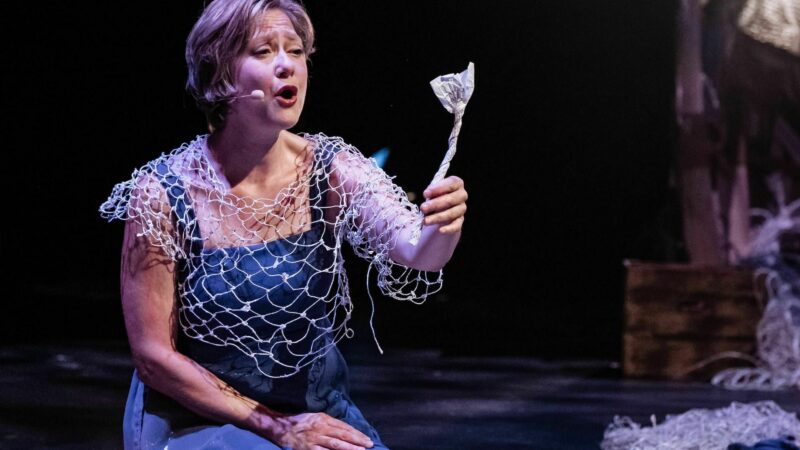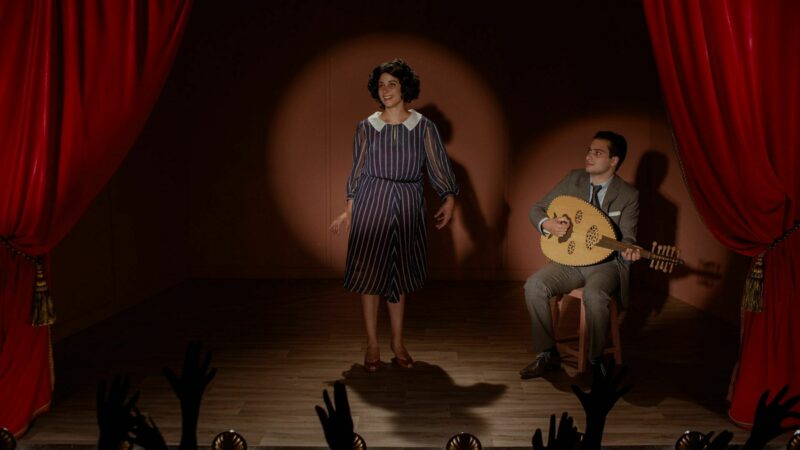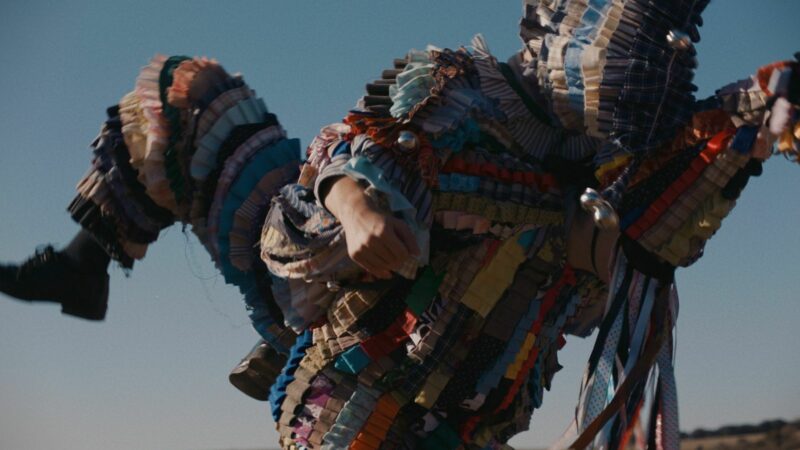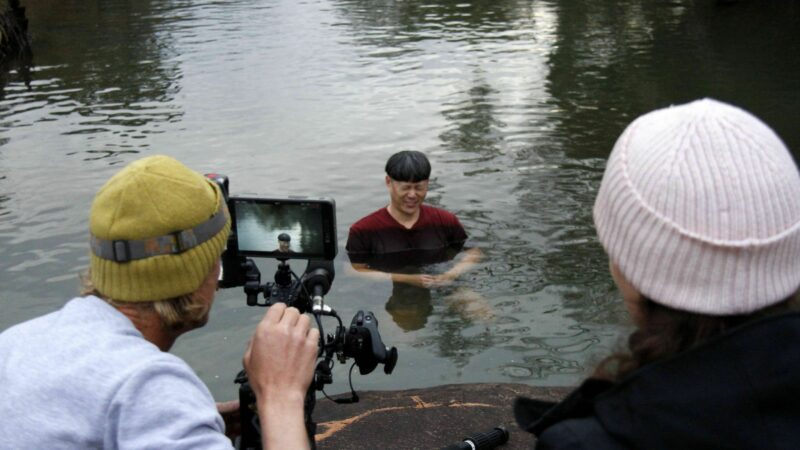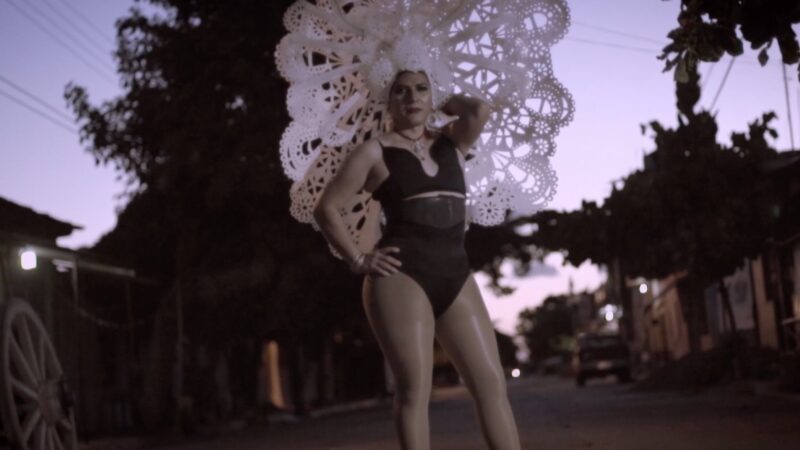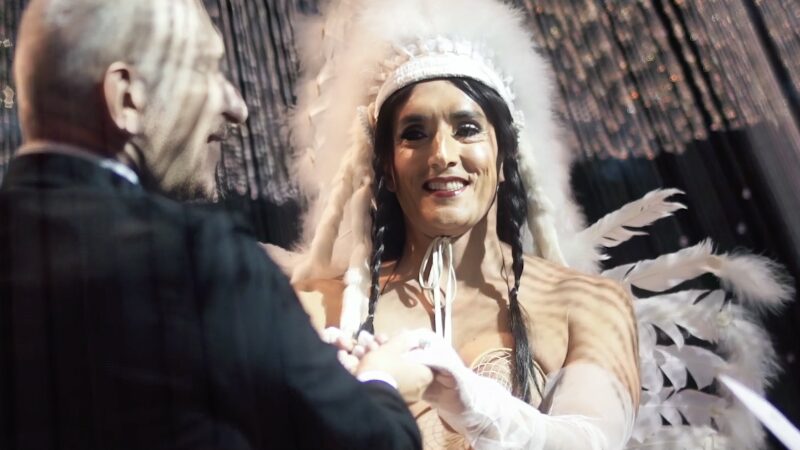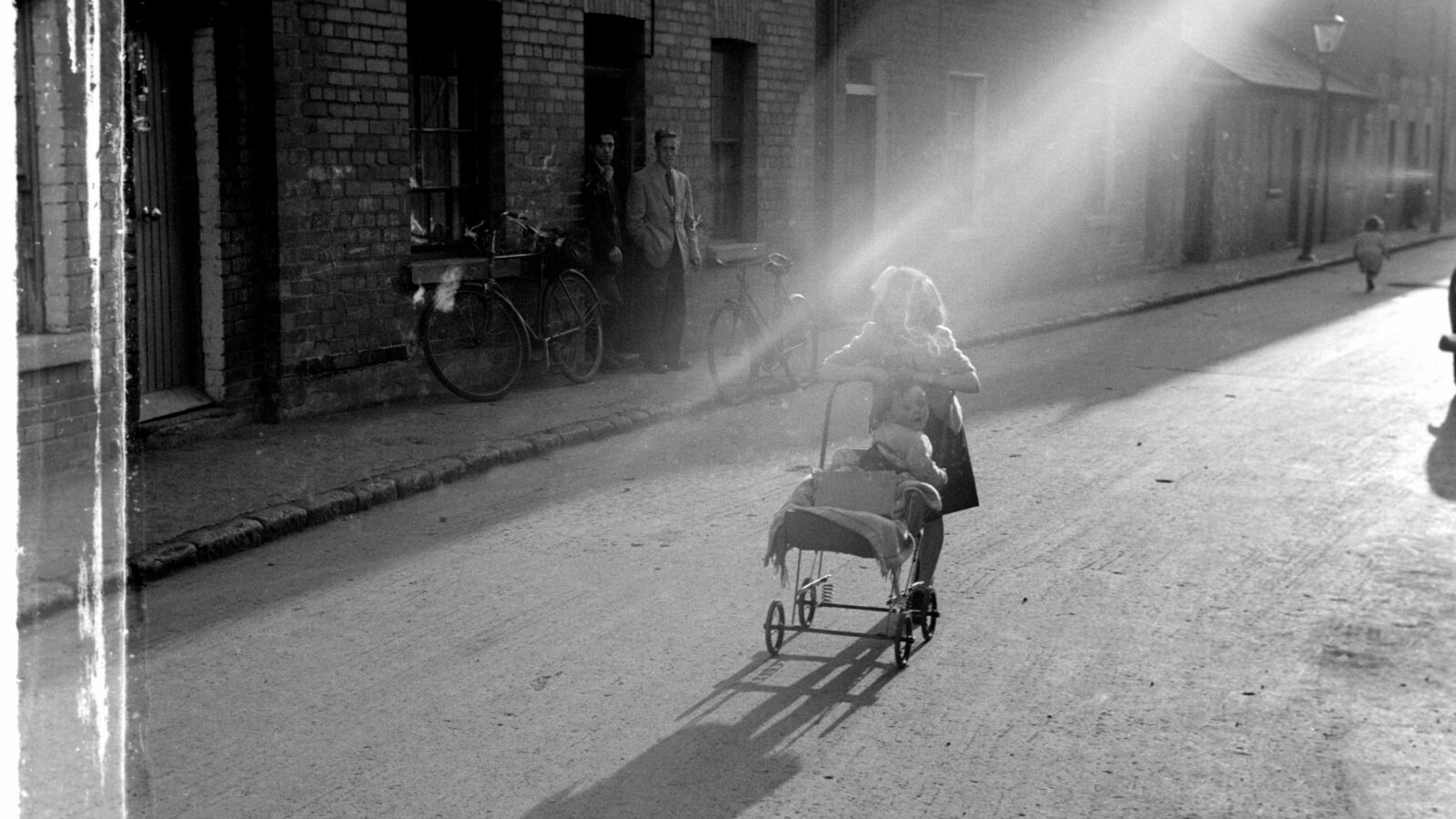
 Bande-annonce
Bande-annonce
Prix du meilleur essai, FIFA 2024
Dans ce film-poème inspiré par les photographies de Nevill Johnson et enrichi par les écrits de Patrick Kavanagh et Samuel Beckett, le cinéaste irlandais Alan Gilsenan nous plonge dans l’esprit rebelle de Baggot Street à Dublin au milieu du 20e siècle. Une archéologie cinématographique reconstruisant les origines, les nuances et les vicissitudes d’un mouvement culturel, et un hommage aux grandes voix littéraires.
Mot de réalisation
… Et il y a des endroits que vous ne trouverez sur aucune carte. L’un d’eux est devenu connu sous le nom de Baggotonia. Lieu de mythe et de mémoire, cette zone dont on se souvient s’étend sur un rayon d’environ un mille à l’extérieur du pont de la rue Baggot de Dublin. C’est le sujet insaisissable de mon dernier film Ghosts of Baggotonia..
J’imagine que beaucoup de ceux qui s’agitent le bas du canal pour se rendre au siège numérique du Grand Canal Dock ou qui prennent un café de fantaisie alors qu’ils se dirigent vers leurs bureaux dans les mondes fictifs de la finance et de la publicité de la région, connaissent peu l’histoire de la région. L’âme du lieu.
Baggotonia représente largement un temps et un lieu pendant les années quarante et les années Xinqui (bien qu’elle ait également fait écho dans les années soixante et soixante-dix) où il y avait un épanouissement radical de l’activité artistique et intellectuelle. C’était un mouvement quelque peu clandestin qui était un contrepoint aux mœurs catholiques conservatrices d’une époque incarnées par le personnage noble et acier de l’archevêque John Charles McQuaid.
Patrick Kavanagh, Flann O’Brien et Brendan Behan sont les garçons d’affiche de l’époque, mais il y avait beaucoup, beaucoup d’autres noms, certains malheureusement maintenant perdus dans l’histoire, qui ont fait leur marque à l’époque.
- Alan Gilsenan
Dans ce film-poème inspiré par les photographies de Nevill Johnson et enrichi par les écrits de Patrick Kavanagh et Samuel Beckett, le cinéaste irlandais Alan Gilsenan nous plonge dans l’esprit rebelle de Baggot Street à Dublin au milieu du 20e siècle. Une archéologie cinématographique reconstruisant les origines, les nuances et les vicissitudes d’un mouvement culturel, et un hommage aux grandes voix littéraires.
Mot de réalisation
… Et il y a des endroits que vous ne trouverez sur aucune carte. L’un d’eux est devenu connu sous le nom de Baggotonia. Lieu de mythe et de mémoire, cette zone dont on se souvient s’étend sur un rayon d’environ un mille à l’extérieur du pont de la rue Baggot de Dublin. C’est le sujet insaisissable de mon dernier film Ghosts of Baggotonia..
J’imagine que beaucoup de ceux qui s’agitent le bas du canal pour se rendre au siège numérique du Grand Canal Dock ou qui prennent un café de fantaisie alors qu’ils se dirigent vers leurs bureaux dans les mondes fictifs de la finance et de la publicité de la région, connaissent peu l’histoire de la région. L’âme du lieu.
Baggotonia représente largement un temps et un lieu pendant les années quarante et les années Xinqui (bien qu’elle ait également fait écho dans les années soixante et soixante-dix) où il y avait un épanouissement radical de l’activité artistique et intellectuelle. C’était un mouvement quelque peu clandestin qui était un contrepoint aux mœurs catholiques conservatrices d’une époque incarnées par le personnage noble et acier de l’archevêque John Charles McQuaid.
Patrick Kavanagh, Flann O’Brien et Brendan Behan sont les garçons d’affiche de l’époque, mais il y avait beaucoup, beaucoup d’autres noms, certains malheureusement maintenant perdus dans l’histoire, qui ont fait leur marque à l’époque.
- Alan Gilsenan
Autre festival :
Dublin Festival international de Film, Irelande (2023)
Dublin Festival international de Film, Irelande (2023)
| Réalisation | Alan Gilsenan |
| Montage | Bjorn MacGiolla |
| Narration | Camille O'Sullivan |
| Photographie | Colm Hogan, Roman Bugosvskiy |
Séance


Réalisation

Alan Gilsenan
Disponible en anglais seulement
Alan Gilsenan is an award-winning writer, film-maker and theatre director. His widely diverse body of film work extends across documentary, feature films and experimental work. Gilsenan has also made a feature-length film installation inspired by Joyce’s Ulysses currently on permanent display at Dublin’s new MOLI (Museum of Literature Ireland) as well as a number of collaborations with other artists, including Dorothy Cross in Heartship and with choreographer Liz Roche in his film of Naher.
Alan Gilsenan graduated from Trinity College Dublin with a First Class Honours in Modern English and Sociology. While studying for a M. Litt in Drama Studies at TCD, Alan Gilsenan formed Yellow Asylum Films with Martin Mahon and made their first film, Samuel Beckett’s Eh Joe, with Siobhan McKenna in her last role. In the theatre, he recently conceived & directed a production of BECKETT | POEMS staged at the Beckett Festival in Enniskillen and at the Dublin International Literature Festival.
Other documentary work includes a drama-documentary Eliza Lynch : Queen of Paraguay, with Maria Doyle-Kennedy in the title role which premiered at the London Film Festival ; the series God Bless America for ITV in Britain, six highly personal portraits of U.S. cities through the eyes of American authors, including Gore Vidal, Marsha Hunt, Neil Simon, Patricia Cornwell and Garrison Keillor ; The Irish Empire, a five-hour history of Irish emigration ; The Green Fields of France, a poetic meditation on the Irish who died in World War One ; Maura’s Story, the story of a young Irish-American woman who became a Buddhist saint in Japan ; Ó Pheann an Phiarsaigh, a film-poem inspired by the creative writings of Patrick Pearse ; The Ghost of Roger Casement, a feature documentary on the international humanitarian and Irish rebel ; and The Irish Mind, a four-part look at the defining qualities of the Irish across the globe. He has also made a number of documentary series on highly sensitive social issues for Irish television : The Asylum (a four-hour portrait of Portrane Psychiatric Hospital), The Hospice (inside St Francis Hospice), I See A Darkness (about suicide in Ireland), and A Time to Die (on euthanasia
Last year, Alan Gilsenan was appointed Arts Council Film Artist in Residence at University College Cork.
Notes biographiques fournies par l’équipe du film et éditées par Le FIFA
Alan Gilsenan is an award-winning writer, film-maker and theatre director. His widely diverse body of film work extends across documentary, feature films and experimental work. Gilsenan has also made a feature-length film installation inspired by Joyce’s Ulysses currently on permanent display at Dublin’s new MOLI (Museum of Literature Ireland) as well as a number of collaborations with other artists, including Dorothy Cross in Heartship and with choreographer Liz Roche in his film of Naher.
Alan Gilsenan graduated from Trinity College Dublin with a First Class Honours in Modern English and Sociology. While studying for a M. Litt in Drama Studies at TCD, Alan Gilsenan formed Yellow Asylum Films with Martin Mahon and made their first film, Samuel Beckett’s Eh Joe, with Siobhan McKenna in her last role. In the theatre, he recently conceived & directed a production of BECKETT | POEMS staged at the Beckett Festival in Enniskillen and at the Dublin International Literature Festival.
Other documentary work includes a drama-documentary Eliza Lynch : Queen of Paraguay, with Maria Doyle-Kennedy in the title role which premiered at the London Film Festival ; the series God Bless America for ITV in Britain, six highly personal portraits of U.S. cities through the eyes of American authors, including Gore Vidal, Marsha Hunt, Neil Simon, Patricia Cornwell and Garrison Keillor ; The Irish Empire, a five-hour history of Irish emigration ; The Green Fields of France, a poetic meditation on the Irish who died in World War One ; Maura’s Story, the story of a young Irish-American woman who became a Buddhist saint in Japan ; Ó Pheann an Phiarsaigh, a film-poem inspired by the creative writings of Patrick Pearse ; The Ghost of Roger Casement, a feature documentary on the international humanitarian and Irish rebel ; and The Irish Mind, a four-part look at the defining qualities of the Irish across the globe. He has also made a number of documentary series on highly sensitive social issues for Irish television : The Asylum (a four-hour portrait of Portrane Psychiatric Hospital), The Hospice (inside St Francis Hospice), I See A Darkness (about suicide in Ireland), and A Time to Die (on euthanasia
Last year, Alan Gilsenan was appointed Arts Council Film Artist in Residence at University College Cork.
Notes biographiques fournies par l’équipe du film et éditées par Le FIFA
Quelques films :
A Time to Die (2012)
I See A Darkness (2009)
The Hospice (2007)
The Asylum (2005)
A Time to Die (2012)
I See A Darkness (2009)
The Hospice (2007)
The Asylum (2005)
Vous aimerez aussi






